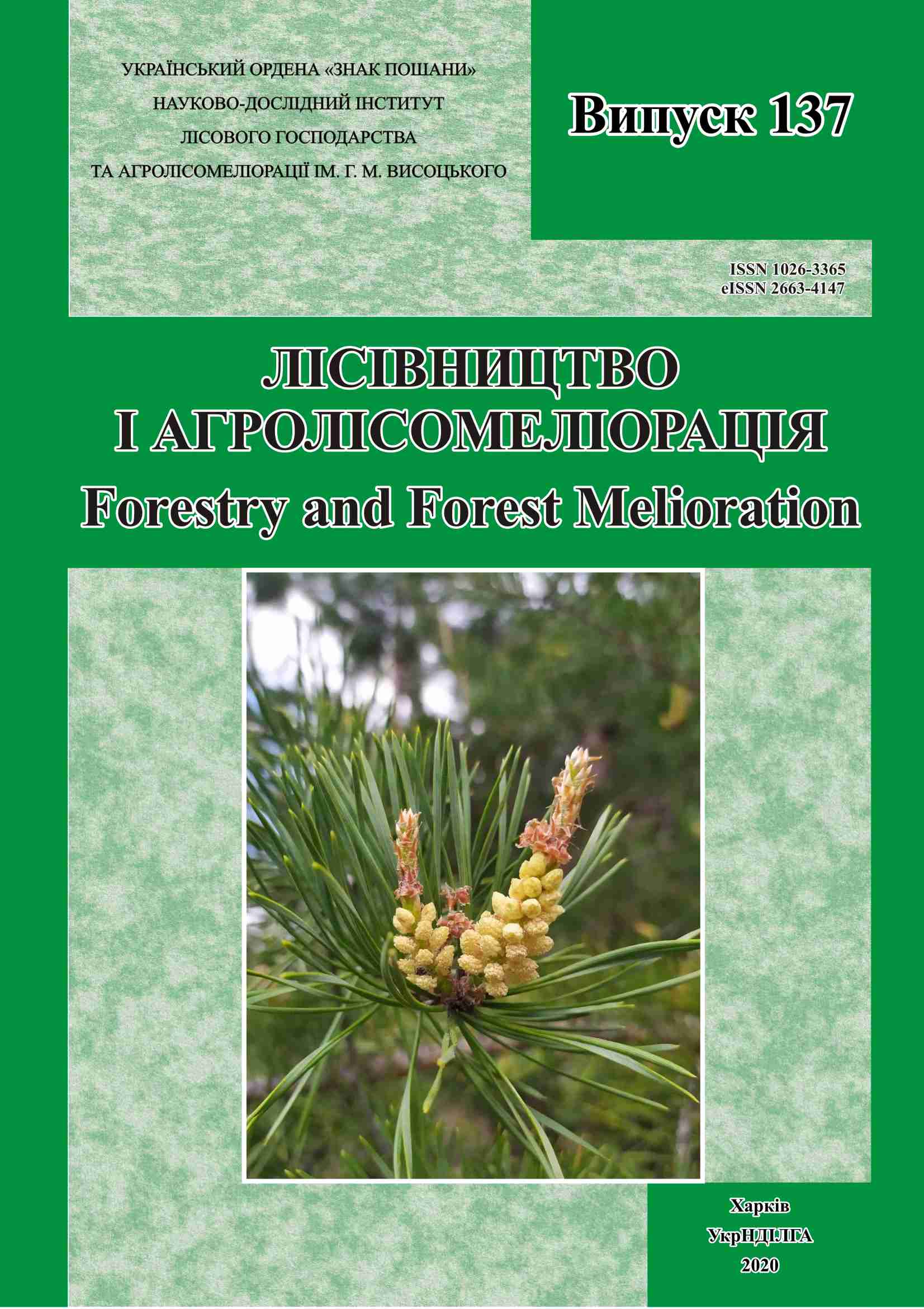Abstract
Introduction
In Donetsk Region, overburden dumps are the most common among lands disturbed by the mining industry. They have low fertility, unfavourable physical and chemical properties and microclimatic conditions. Natural revegetation accompanied by changes in species composition and structure is an important ecological and biological process in land disturbed by industry. In such areas, the species composition transforms over time from herbaceous associations to complex multi-species groups with a participation of the arboflora representatives.
The aim of the study was to investigate the dynamics of natural revegetation with trees and shrubs in disturbed areas in Donetsk Region
Materials and Methods
The study was carried out during 2002–2020 on external dumps of overburden soils. Processes of natural revegetation were studied by laying temporary and permanent sample plots, accounting plots and route courses according to generally accepted methods in the most representative sites to cover all types of revegetation in transformed areas and a detailed description of the process.
Results and Conclusions
The research areas are located on the slopes of different exposures and steepness. Soil mixtures of overburden soils belong to ІІ (relatively poor soils) and ІІІ (poor soils) fertility classes (forest suitability) and to very dry (0) and dry types (1) of site conditions.
Natural revegetation on external dumps occurs with a participation of the most site-adaptive species, primarily in micro-depressions, on the slopes of western and north-western exposures and in the lower parts of eastern and northeastern exposures, i.e. under better humidity and microclimate conditions.
Trees and shrubs regenerate better on highly stony and medium stony soils. Sylvatization occurs first by seed, then by the vegetative type, and by the combined type later on. The nature of plant spread is gradual: from dispersed to continuous. Silvatization is predicted to lead to formation of new plant communities and to increase forest cover in disturbed areas.
In quarry and dump areas, natural revegetation occurs in stages – from grassy vegetation to the formation of groups with a predominance of tree and shrub species, not only in areas with favourable forest conditions but also in the areas considered unsuitable for forest by their edaphotopes and hyhrotopes.
Robinia pseudoacacia L., Elaeagnus angustifolia L., Symphoricarpus rivularis Suksdorf, Swida sangunea (L.) Opiz,, Cerasus mahaleb (L.) Mill., Prunus spinosa L., Соtinus coggygria Scop., Fraxinus excelsior L., Ulmus (U.) glabra Huds., U. suberosa Moench, Rosa canina L., Rhus typhina L., Armeniaca vulgaris Lam., Acer (A.) tataricum L., A. negundo L., Crataegus oxyacantha L., Lycium barbarum L., Lonicera tatarica L. Ligustrum vulgare L. are most actively renewed by seed and vegetative ways.
2 Figs., 3 Tables, 33 Refs.
Key words: reclamation, natural revegetation, trees, shrubs.

This work is licensed under a Creative Commons Attribution 4.0 International License.
